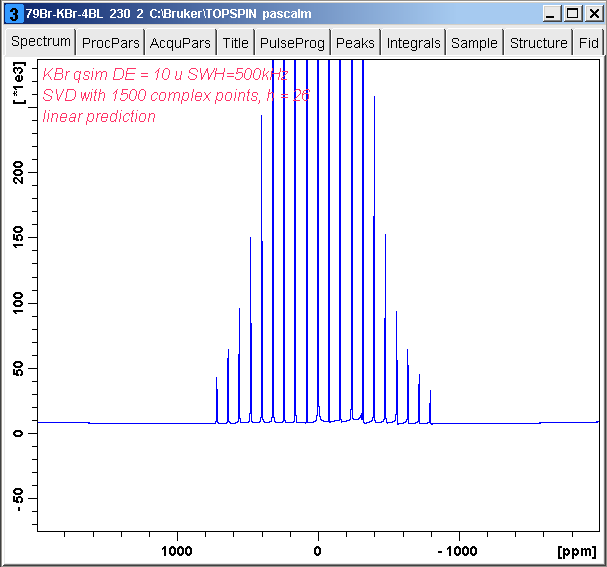*** Outline ***
The C program harminv-1.3.1 and the two Java applications harmonic_inversion.jar and nmrsvd2.jar are already described in harmonic inversion for improving spectrum resolution
We extend their applications to NMR probe head dead time correction.
(A) 79Br MAS spectrum baseline correction with harmonic inversion
79Br MAS FID signal and its spectrum are observed for setting the magic angle of the NMR probe.
- D. L. Bryce, G. M. Bernard, M. Gee, M. D. Lumsden, K. Eichele, and R. Wasylishen
Practical aspects of modern routine solid-state multinuclear magnetic resonance spectroscopy: one-dimensional experiments,
Can. J. Anal. Sci. Spectrosc. 46, 46-82 (2001). - J. S. Frye and G. E. Maciel
Setting the magic angle using a quadrupolar nuclide,
J. Magn. Reson. 48, 125-131 (1982).
Abstract
The acquisition parameters for one-pulse MAS experiment on KBr powder: 10-kHz rotor spinning speed; SWH = 500 kHz; dead time DE = 0.01 msec; DW (TopSpin definition) = 0.001 msec; TD (TopSpin definition) = 16384; TDeff = 16248; qsim AQ_mode. (Its TopSpin file 20.zip)
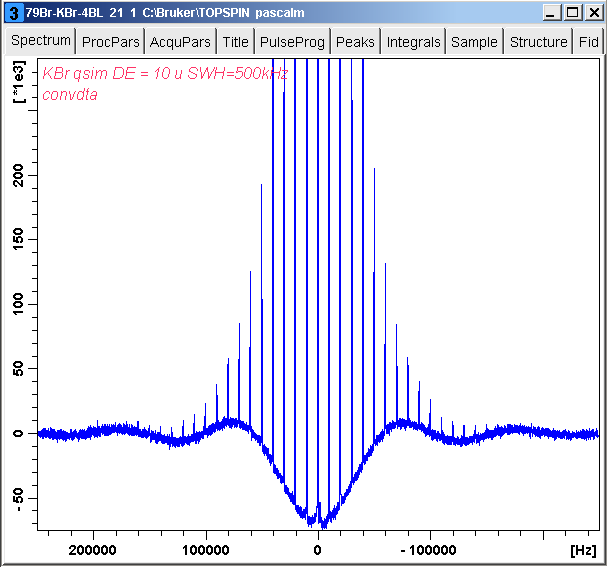
We decrease the noise of the FID signal with SVD (singular value decomposition) method implemented in the Java application nmrsvd2.jar, using 1500 complex points and 26 singular values. As a result the FID is denoised but truncated.
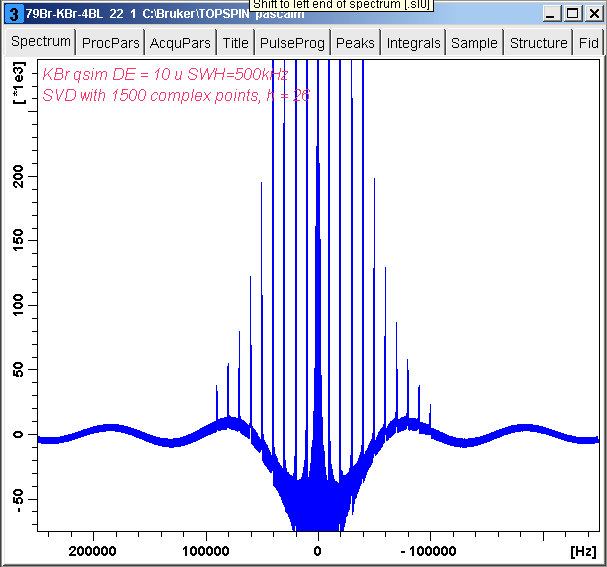
We submit the truncated, denoised FID to the C program harminv-1.3.1.
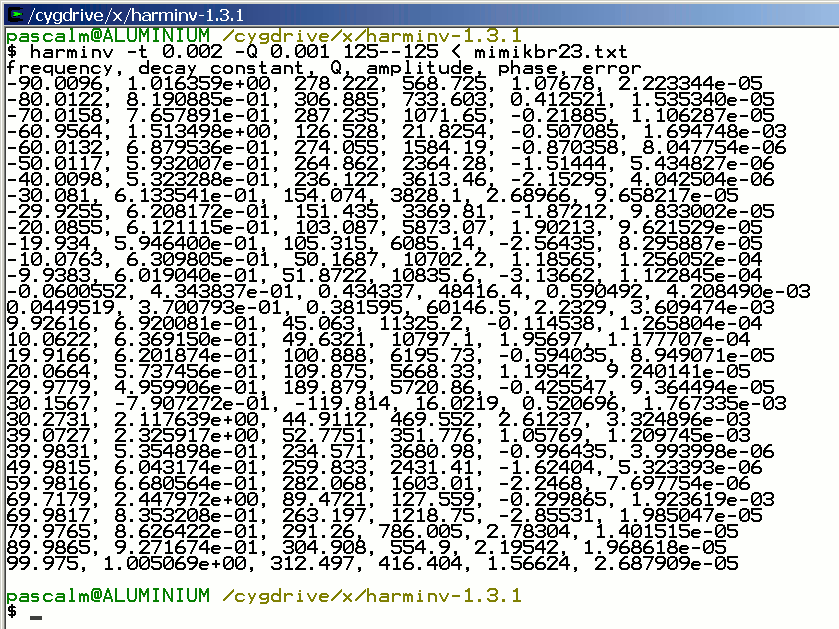
We simulate the FID with data provided by harminv-1.3.1.
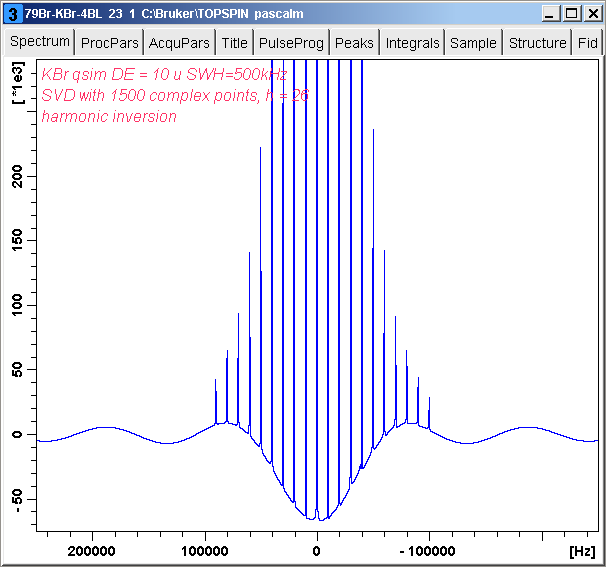
We simulate a new FID with previous data provided by harminv-1.3.1, including 0.01 msec (or five complex points) dead time correction.
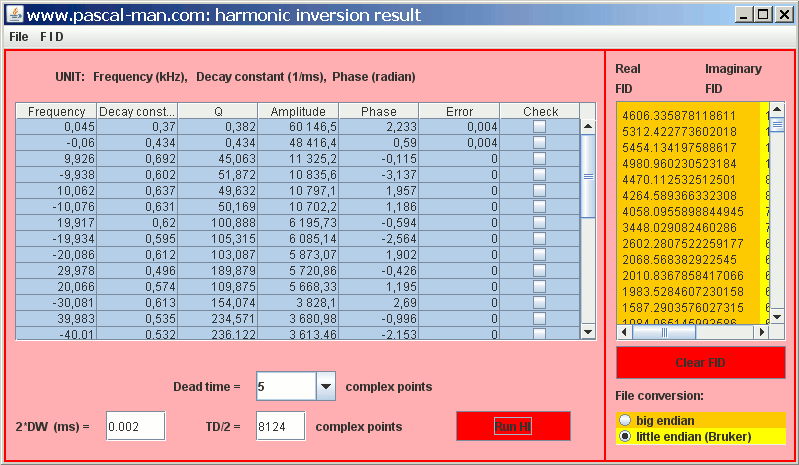
After dead time correction, the spectrum has a flat baseline.
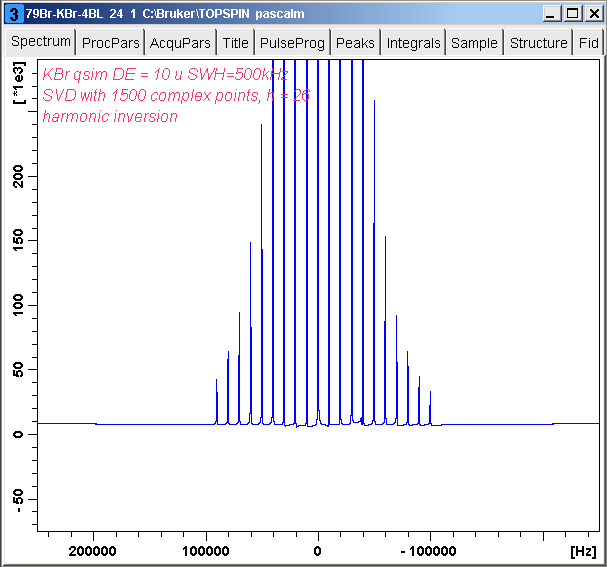
(B) 79Br MAS spectrum baseline correction with backward linear prediction
We apply backward linear prediction on the one-pulse MAS FID simulated with harminv-1.3.1, whose spectrum is shown in Figure 4.

